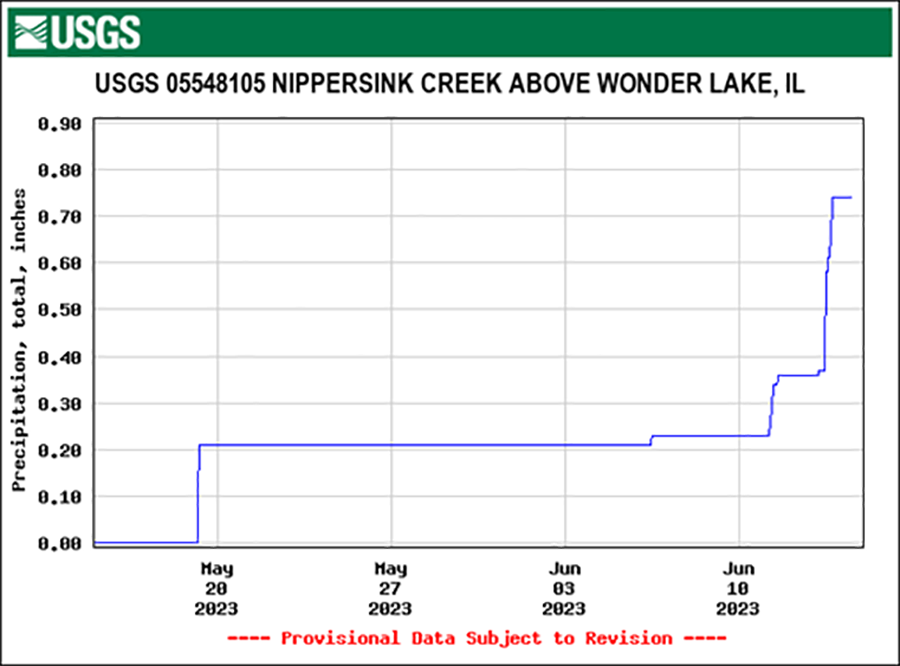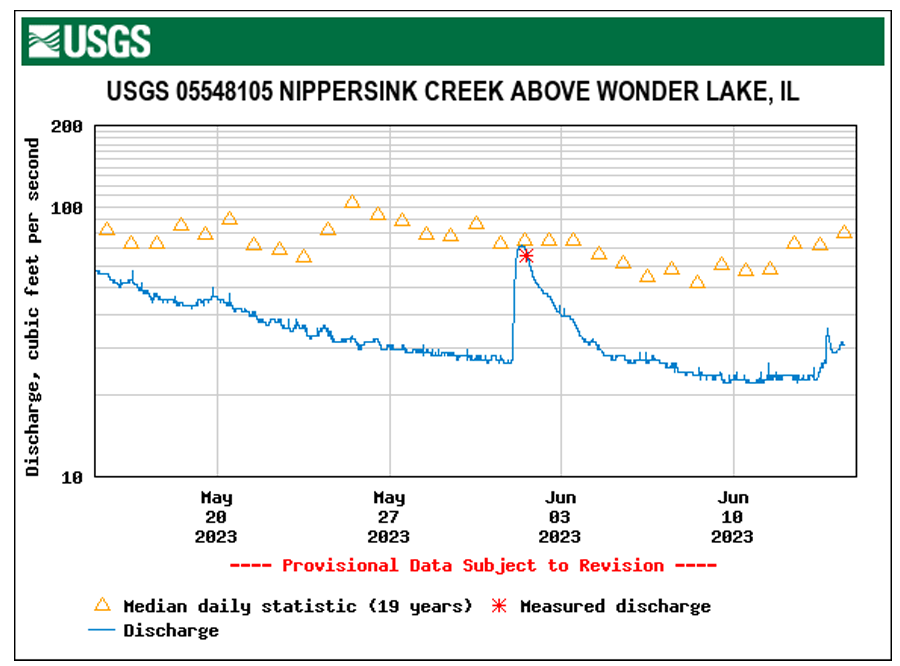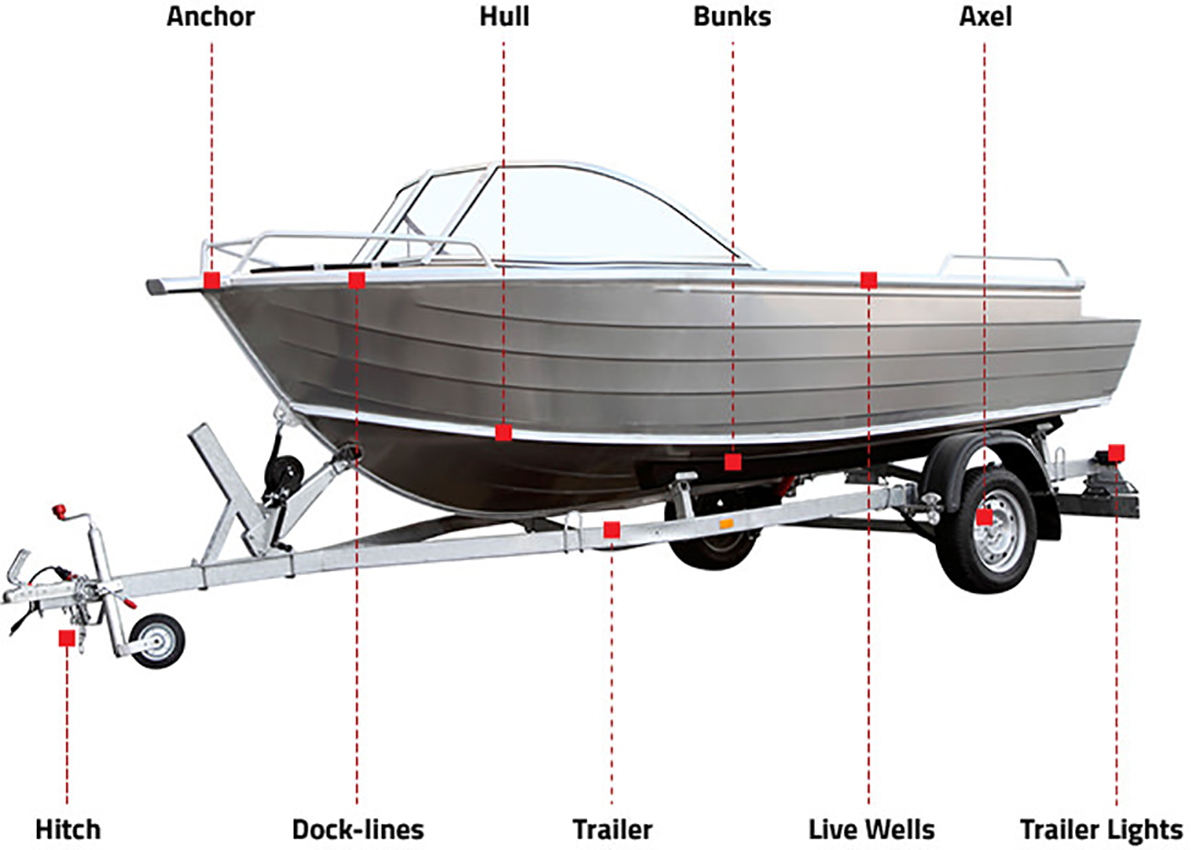Recent rainfall

Recent discharge

1. The MPOA helps fund a stream gage on Nippersink Creek upstream of Wonder Lake that is operated by the U.S. Geological Survey (USGS). On-line rainfall data from that stream gage shows that even with the welcome rain on Tuesday, there still has been only 3/4 inch of rain over the past 30 days. The lack of rainfall in the Wonder Lake watershed has also contributed to a reduction in the volume of water flowing into Wonder Lake. The 19-year average of streamflow into Wonder Lake at this point of the summer should be roughly 80 cubic feet per second (cfs), while the gage is currently showing only 30 CFS of flow.
2. With a long-range forecast for a potentially warmer than average summer and fall, it’s important to keep in mind that in-lake nutrients, the lack of rainfall, and hot temperatures are the main triggers for significant algae blooms to occur. In these conditions, there is also the potential for an outbreak of Harmful Algae Blooms (HABs). A HAB algal bloom can be green, blue, red or brown, and can be scummy or look like paint on the surface of the water. Representative photos of HABs can be found here: https://www.dec.ny.gov/chemical/81962.html
3. As the recreational boat season is in full swing, it is important to ensure that boats entering Wonder Lake are free of aquatic invasive hitchhikers that could create long-term and expensive lake management problems. The Wisconsin Department of Natural Resources maintains an extensive database of Wisconsin lakes and rivers currently containing Aquatic Invasive Species (AIS): https://dnr.wi.gov/lakes/invasives/AISByWaterbody.aspx As an example, 40 lakes and rivers in Kenosha County are identified as having a variety of AIS.
It is recognized that a significant portion of boats on Wonder Lake may rarely, if ever, leave the lake, which certainly helps reduce the importation of aquatic invaders. However, it is boats that come to Wonder Lake from other lakes whose operators don’t first make sure that their boat and trailer are clean that pose the biggest threat. The key to AIS prevention is to “Clean, Drain and Dry”, as described on the following section.
CLEAN. DRAIN. DRY.
The boating industry and natural resource agencies have a common goal of getting boaters out to enjoy amazing places across the country. But boating access and enjoyment are threatened by the spread of aquatic invasive species – non-native plants and animals that have been introduced to our waters and that can limit our ability to recreate, diminish our fishing opportunities, and degrade the waters we enjoy.
Recreational boats are one way that unwanted species are moved between waters. Thousands of partners are working to help boaters and other recreational users understand the importance of “Clean Drain Dry” and how to avoid unintentionally spreading invasive species. By promoting the Stop Aquatic Hitchhikers! message, businesses, industries, academia, and non-governmental organizations have an opportunity to minimize the risk that recreational users contribute to invasive species.
HOW YOU CAN HELP: https://stopaquatichitchhikers.org/prevention/

